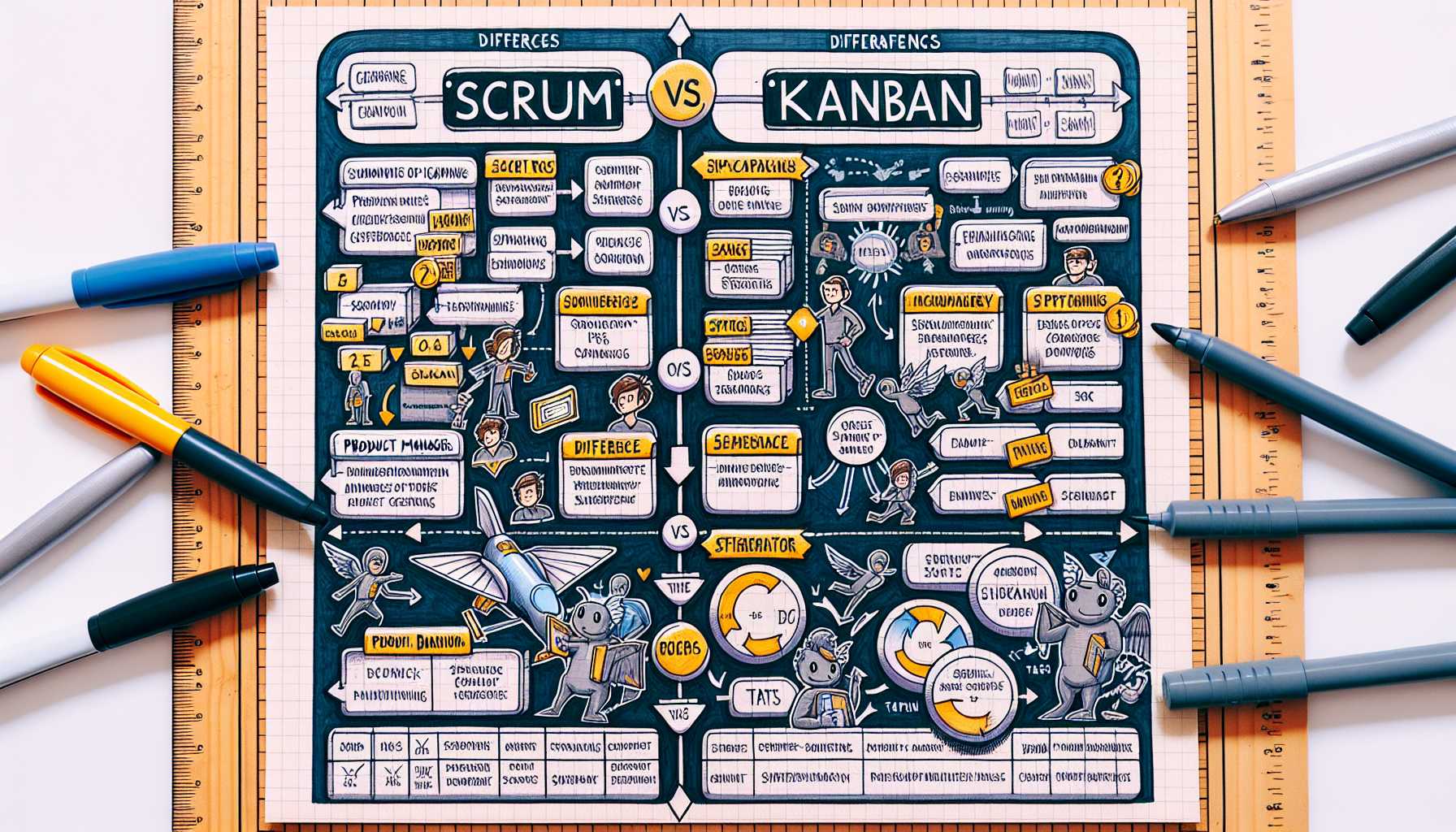Welcome back, seasoned product connoisseurs. Today, we’re going to explore the nuances of our role in different agile environments—Scrum and Kanban. Both frameworks uphold the agile manifesto but in distinctive styles. Through my journey, I’ve walked the tightropes of both, and I invite you to delve into the intricacies of these experiences.

Scrum: The Time-Boxed Battleground
Let’s first dive into the Scrum framework. Scrum is a sprint-based approach to product development where time-boxing is essential. The scrum team operates within a fixed duration (sprints) to deliver potentially shippable product increments. As a Product Manager (PM) within a Scrum team, which is often interchangeably referred to as the Product Owner role, I found my responsibilities sharply focused on maximizing value within these temporal boundaries.
Sprint Planning as a Guiding Compass
My role would kick-off a sprint with sprint planning. Crafting the sprint goal was paramount—it was the North Star for the development team. Defining what goes into the sprint backlog from the product backlog, prioritizing tasks based on business value, and ensuring that goals were attainable within the sprint were all part of this crucial negotiation. Clear communication with stakeholders during this phase set up the sprint for success. I found the use of story mapping and moscow prioritization helpful here.
Daily Scrums as the Pulse Check
While not a core part of the development team’s daily scrum, I often attended as an observer to maintain the pulse. This ritual bolstered my understanding of day-to-day progress and impediments. Pro-tip: active listening in these ceremonies offers vital cues for mid-sprint steerings.
The Sprint Review and Retrospective: Bookends of Learning and Adaptation
At the end of the sprint, the sprint review was my moment to shine or reflect. Demonstrating the product increment to stakeholders was not just a showcase but an opportunity to gather feedback and adapt the product roadmap accordingly. Following this, the sprint retrospective offered an inward glance, focusing on process improvement—an empowering tool to embolden the team for their next sprint endeavor.
Kanban: The Continuous Flow Framework
Transitioning from Scrum to Kanban offered a shift in perspective. Kanban is an evolutionary approach, emphasizing continuous delivery through a visual management system. In this realm, the PM role transitions from sprint dynamism to a steadier yet vigilant sentinel.
The Kanban Board: A Visual Symphony
My primary instrument was the Kanban board. It was vital to maintain a steady flow and identify bottlenecks. Our team’s effectiveness hinged on the board’s structure and our discipline in managing it. Daily stand-ups beside this board meant constant triage, addressing impediments swiftly to maintain the flow.
Limiting Work in Progress: A Test of Discipline
An essential responsibility was the enforcement of Work In Progress (WIP) limits. Initially challenging, striking the balance between too much and too little work took fine-tuning and a keen understanding of the team’s velocity and capacity. Over time, my knack for identifying the right WIP limits helped us avoid burnout and encouraged a quality-driven mindset.
The Cadence of Continuous Reflection
Unlike Scrum, Kanban doesn’t prescribe time-boxed sprints or retrospectives. However, promoting a culture of continuous reflection and process improvement was pivotal. We would hold session ‘Kanban cadences,’ which were the heartbeat for our refining and fine-tuning processes. Here, the retrospective became a more fluid practice, cropping up as needs arose rather than at time-boxed intervals.
A Tale of Two Frameworks: A Personal Reflection
Reflecting on these two methodologies and my role within them, Scrum often felt like leading a charge. There was a clear sense of beginning, middle, and end. Kanban, by contrast, felt like conducting an orchestra—maintaining harmony, tempo, and flow.
In Scrum, my role was often highly collaborative yet paced with a sense of urgency due to sprint deadlines. In Kanban, it was continuously observant, a strategic thinker preventing future blockades and ensuring the optimum throughput of the system.
What Unified the Roles
Despite these differences, some responsibilities remained consistent in each: product backlog management, stakeholder communication, and market and user research. The lessons learned in one framework enriched my performance in the other. The adaptability developed in Scrum made me an agile thinker in Kanban situations and vice versa.
Whether you’re at the helm of a Scrum team or orchestrating a Kanban ensemble, the role of a product manager is as dynamic as it is rewarding. It’s not merely about adapting to what a framework prescribes, but rather shaping it to serve the product vision best. And remember, thriving in such versatile roles lies not only in frameworks and methodologies but in how effectively one can lead, inspire and serve their team and stakeholders.
Till next time, keep championing greatness in your products!
